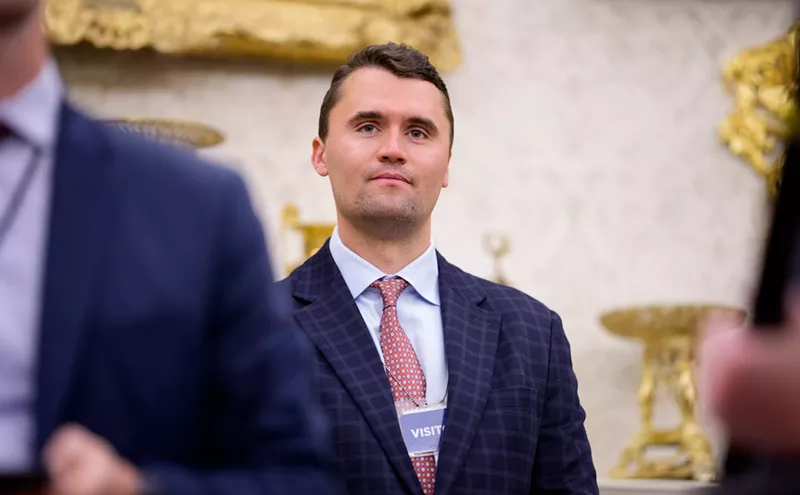Don't know who Sessions and Montoya-Coggins are? Don't especially care? Doesn't really matter, because each of them has some $1 million to spend to make you care. Montoya-Coggins, a Democrat, and Sessions, the Republican incumbent, are running for the U.S. House of Representatives from Texas' 5th District, which includes parts of Dallas and its eastern and southeastern suburbs. The two candidates will soon be as familiar as any TV huckster selling long distance or auto insurance--even to the vast majority of people in the Dallas area who don't live in the district.
That's because, given the way congressional campaigns are run today, a local race for Congress is no longer very local, and nothing illustrates this better than the 5th District. The issues aren't all that local, the money financing the campaign isn't especially local, and the district was drawn so it wouldn't be local. That the 5th is a swing district this year, one of a dozen or so across the country that the Democrats have a chance to win to retake control of the House, makes it even less local, and that's not easy to do.
"Time was when the Senate concerned itself with national issues and the House concerned itself with local ones," says Wendell Cochran, who has studied campaigns and campaign financing for almost 30 years and who today teaches at American University in Washington and oversees the school's campaign finance Web site. "And I don't think there is any question that the House is now going that way too [toward dealing with national issues]. What you're seeing in Texas is not all that unusual."
In the old days, which ended about the time Richard Nixon fled the White House, campaigns for the House of Representatives were about getting a federal building for the district, making sure residents received their share of federal highway funds, prodding the post office about poor service, and answering constituents' passport questions. Campaigning consisted of yard signs and church suppers, and it was possible to walk the district, knock on doors, and make an impression with a sizable number of voters.
That, in fact, is how Jim Mattox and John Bryant, two Democrats, represented the 5th District for more than two decades. At that time, the district went from East Dallas, Pleasant Grove, and Mesquite through East Texas. But when the Texas Legislature reapportioned the state after the 1990 census, they took out part of East Dallas, most of Mesquite and a chunk of East Texas and replaced them with portions of Uptown and Turtle Creek, as well as a seven-county area stretching 150 miles south from Athens to Bryan. This made it kind of hard to walk the district.
Bryant took one look at the new boundaries, figured he had a better chance of beating Phil Gramm for the U.S. Senate in 1996 (he didn't even make it out of the primary), and retired from the House. That's when Sessions got the seat, defeating a civil servant and moderate Democrat named John Pouland. Sessions, incidentally, had lost to Bryant in 1994 in the old district, coming within a couple of points of pulling off a huge upset.
He hasn't been challenged much since then, thanks to poorly financed competition and the district's makeup, which was designed to shelter a Republican. This may seem odd, since the Texas Legislature is still nominally controlled by Democrats, but it's all part of what the legendary political scientist Mel Brooks said in Blazing Saddles: "Gentlemen, we've got to protect our phony baloney jobs!"
Gerrymandered districts proliferate throughout Texas, and the 5th is far from the worst. The goal of gerrymandering is to protect incumbents (something that cuts across party lines) and to make sure Texas has enough minority representation to keep the Justice Department from meddling. Rep. Eddie Bernice Johnson, for example, whose 30th District is centered in Oak Cliff, got several liberal and minority parts of Bryant's old 5th District.
Local issues become less important in a congressional election. What local issues do residents of Buffalo, Athens, or Mexia share with someone in Lakewood, Lake Highlands, or Turtle Creek? School vouchers? Hardly. Crime? No. Says Rick Wamre, whose magazine group in East Dallas, Lake Highland, and the Park Cities sponsored the only joint interview of the campaign thus far: "We tried to find questions to ask them about local issues, but a local issue to us here in Dallas isn't an issue at all to someone in Palestine. It's kind of unfortunate, really, because we're local publications, they're local politicians, and we all wound up sitting around a table talking about the environment and health care."
Becca Sharp, press secretary for the Montoya-Coggins campaign, suggests that might be a false distinction. For example, while such issues as health care for the elderly are national in scope, they directly affect the 5th.
"When your neighbor is choosing between a loaf of bread or arthritis medicine, that's absolutely local," she says.
Sessions' campaign manager, Gary Griffith, agrees. "I think that the issues that resonate with working people and taxpayers are the same in Limestone County or Dallas County," he says.
Yet Griffith notes that the district's geographic size requires candidates to devote time to traveling to events that might be spent meeting constituents.
But are there any strictly local issues in this campaign? Sharp says Montoya-Coggins recently attended a cattle auction where some of the talk turned to providing drought relief, which is about as local an issue as there is in North Texas these days.
Montoya-Coggins' campaign "is a rarity," Sharp says. "We are absolutely local to the core."
For an "absolutely local" race, however, the campaigns have collected a fair amount of money from national donors, and they're going need all of it. Another consequence of having a far-flung district is that candidates can't get elected without bushels of cash, turning campaigns into small businesses that pay rent, hire employees, and last long after the campaign is over. Sessions and Montoya-Coggins had each raised $1.2 million through the end of June, which may seem like a lot. But it wasn't even the most in Texas, and it barely placed them in the top 50 in the country. Pouland spent $600,000 in 1996 and lost by seven percentage points. Victor Morales lost to Sessions by 12 points in 1998, and every pundit in town says the $100,000 Morales spent wasn't nearly enough.
That's because the district's size requires media exposure to reach enough voters, and media exposure means radio and TV. The latter used to be unheard of in a congressional race, but that old rule doesn't apply any more.
"That's part of the change you're seeing in contested races like the 5th," says Cal Jillson, who chairs the political science department at Southern Methodist University. "One million dollars worth of yard signs isn't going to do you any good."
The only way to pay for that exposure is to take money from anyone who will give it, even if their only affiliation with the 5th District is to know it's in Texas. This is not the place for a plea for campaign finance reform; it's sufficient to know that Montoya-Coggins and Sessions have accepted money from a staggering variety of sources.
The National Rifle Association gave Sessions $6,500, while the generous folks at Philip Morris, R.J. Reynolds, and Brown & Williamson had enough money left after the tobacco settlement to pass along checks for $7,000. Sessions' biggest donor was Texas Utilities ($11,250), not surprising given how important electricity deregulation is to the company. He also received almost $60,000 from giant national and multi-national banks such as MBNA, Bank One, J.P. Morgan, and Bank of America (as well as donations from assorted community banks, whose agenda is often completely different, and which demonstrates that the system confuses even those who prop it up).
Montoya-Coggins received more than $120,000 from Emily's List, an activist group that supports mostly liberal women, as well as more than $162,000 from lawyers and law firms. Trade unions added almost $120,000, and she received cash from 10 other congressional campaigns, including that of Barney Frank, the gay congressman from Massachusetts who drives House GOP leader Dick Armey of Denton so crazy.
"It's as if they're raising too much money to run a local campaign, says Jillson. "They end up with so much money that they have to bring people in from outside to help them spend it, and these national people only know national issues."
What they know best, on both sides, is something called the Democratic Leadership Council, which may turn out to be Bill Clinton's true legacy. The DLC is the policy group that moved the Democratic Party to the middle--so far to the middle that Clinton, who once worked for George McGovern, could sign the largest welfare reduction bill in U.S. history. The DLC game plan, which was based on the work the Republicans did when Ronald Reagan was president, is about sending a centrist message.
"The DLC perspective is that it takes national, not necessarily local, issues to swing the key voters," says Tim Reeves, a Dallas political consultant who usually works for Democratic candidates (though not in the 5th District this year). "So you send them a conservative Democratic message in a conservative district instead of what I call retail politics--the shoe leather and other types of grass roots organizing to get the vote out."
Which explains why Montoya-Coggins, who probably would have been a liberal Democrat in the old days, criticizes Sessions for not voting to cut middle class taxes enough and calls herself "fiscally conservative." Sessions, who went to Washington as an all-government-is-evil conservative (despite the fact that his father was a federal judge and director of the FBI), has supported liberal litmus test items like expanded Medicare coverage and adding some sort of prescription drug plan for seniors. Says Bryan Eppstein, a Fort Worth political consultant who usually works for Republicans: "Pete hasn't lost touch with his district."
This is not to say there aren't differences between the candidates. Sessions is still a hard-line conservative who votes regularly against the National Education Agency, sponsored a constitutional amendment to make it difficult to raise taxes, and voted against campaign finance reform in 1999. Montoya-Coggins worked in the Clinton White House for two years, and when Clinton appeared at a fund-raiser for her in Austin in 1999, it was at the home of Lloyd Doggett, one of the last of the unreconstructed Texas liberal Democrats. But thanks to what passes for political discourse these days, voters in the 5th will have a hard time figuring out those differences.
And everyone else will have to suffer through the commercials.











